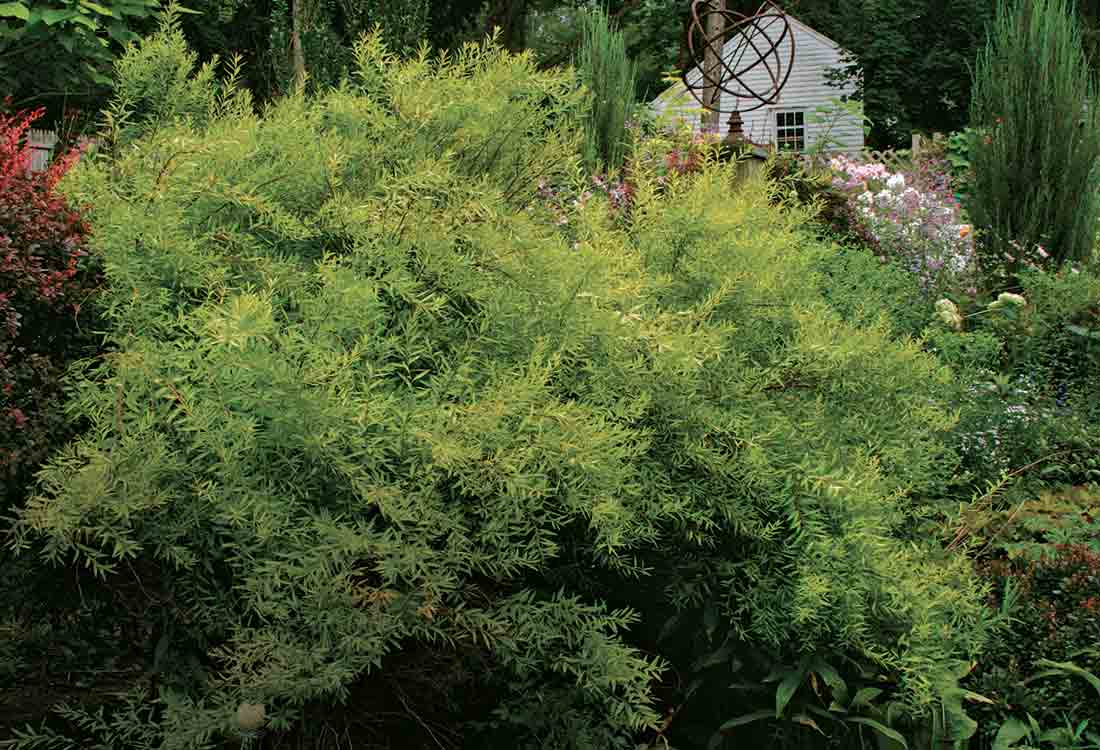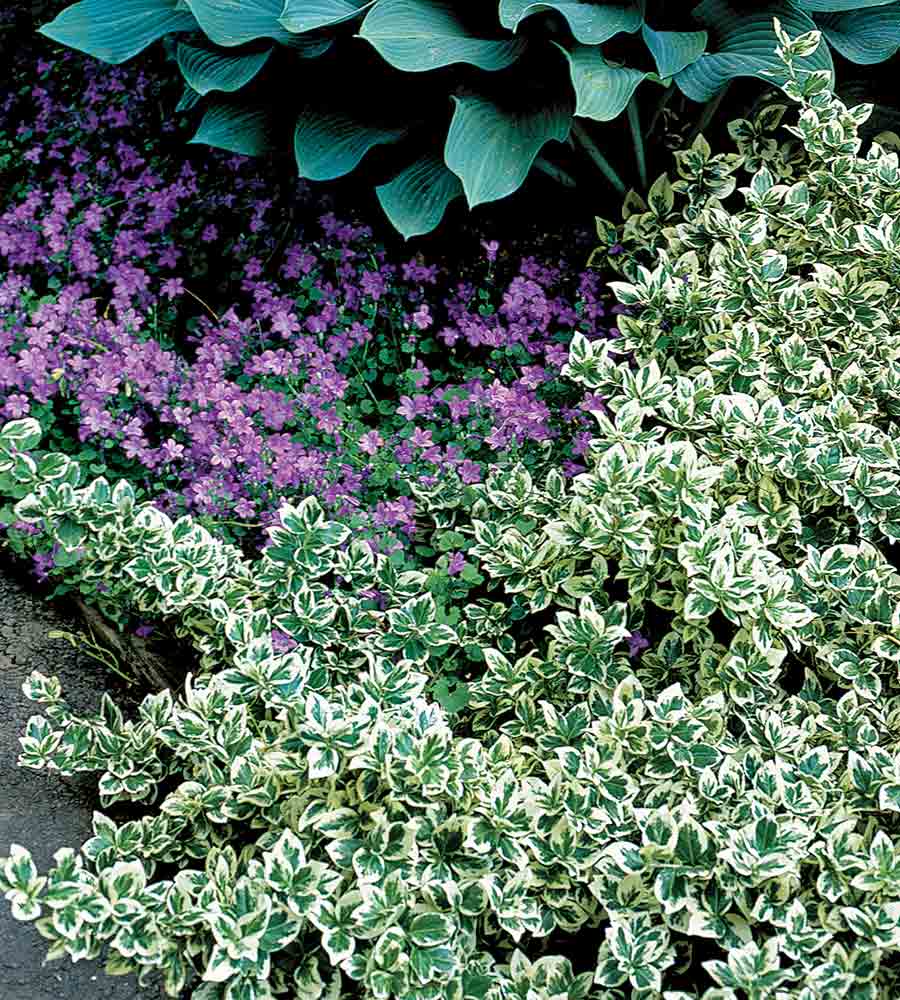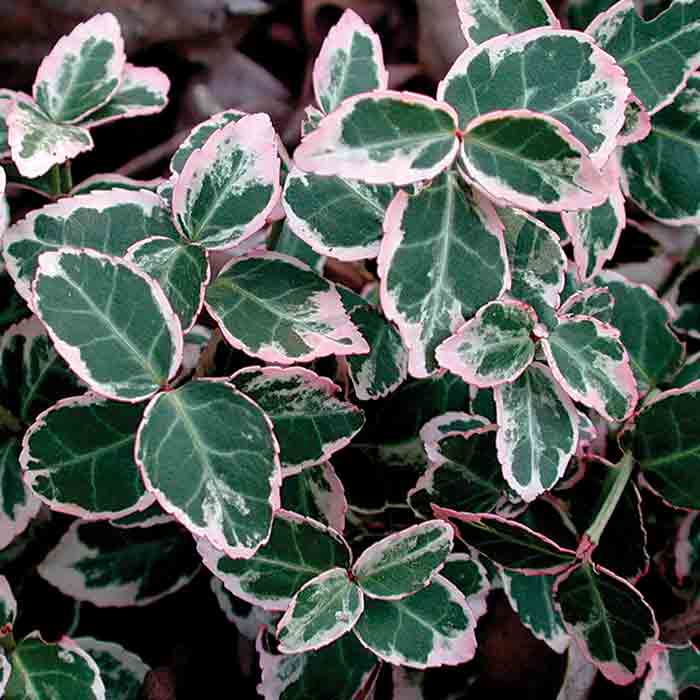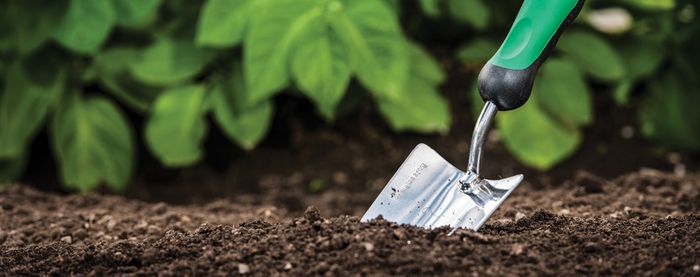8 Amazing Shrubs
A garden designer recommends eight plants that provide reliable good looks without a lot of work

I’ve always called any low-maintenance, high-impact plant a “plant that pays the rent.” To me, that means a plant that earns its keep in the garden by reliably contributing year-round interest. If a plant looks good for only two or three weeks, I don’t use it. As a result, I have come to rely more and more on shrubs—especially these eight—as the main players in my borders. Every gardener wants a garden that is easy to take care of, and shrubs provide long-term impact without all the work of perennials. In fact, you could use just these plants in a border and have an interesting, beautiful planting all year long.
1. An extraordinary hydrangea


I love all hydrangeas, but oakleaf hydrangea is one of my favorites because its large leaves look great on their own and in combination with other plants. Large, oakleaf-shaped leaves contrast well with smaller-leaved plants, but it’s the white flowers on large panicles, which change to pink as they age, that makes ‘Snowflake’ oakleaf hydrangea a winner. Its blooms are double, hose-in-hose, which means that, as the new white petals come out of the middle of the flower, the older petals hold on and fade to pink, producing complexity and depth to the flower. The show continues through fall, as the foliage turns red, attaining deeper hues on plants located in full sun. The flowers persist through winter to complement the shrub’s exfoliating bark. ‘Snowflake’ grows up to 6 feet tall and 8 feet wide—but it doesn’t get as large if grown in the shade, which it prefers in hot climates.
Name: ‘Snowflake’ oakleaf hydrangea (Hydrangea quercifolia ‘Snowflake’)
Zones: 5 to 9
Conditions: Full sun to partial shade; moist, fertile, well-drained soil
Seasonal bonus: In summer, the white blooms turn to pink.
2. Stunning seasonlong color


Some shrubs that I rely on almost as much as hydrangeas are spireas. Most spireas stay relatively small, which makes them useful. They can look formal if clipped, or appear wild and rambling if allowed to grow unpruned. ‘Ogon’ spirea grows 5 feet tall and 6 feet wide, with a tighter form in full sun. Small white flowers open first, followed by narrow, apple green leaves that become vibrant yellow-green and light up the summer border. Its narrow leaves contrast beautifully with oakleaf hydrangea, and the golden hue complements the red foliage of shrubs like purple smoke bush.
Name: ‘Ogon’ spirea (Spiraea thunbergii ‘Ogon’)
Zones: 5 to 8
Conditions: Full sun to partial shade; moist, fertile, well-drained soil
Seasonal bonus: In fall, the foliage turns yellow-orange with a delicate red edge on each leaf.
3. Smoldering shades of purple

Placed in spots where the sun shines through them, purple smoke bushes ignite the border. Their stems grow straight up like pipe cleaners, a habit which makes them useful additions to any border in need of diverse forms. Growing up to 15 feet tall and wide, you can keep purple smoke bushes in check by cutting them back hard each spring after the first leaves break out. They will send up all new growth, year after year. Older plants grown in full sun will “smoke” (flower) if left unpruned, and even the youngest specimens turn a striking burnished orange-purple in fall.
Name: Purple smoke bushes (Cotinus coggygria cvs.)
Zones: 5 to 9
Conditions: Full sun to partial shade; average soil
Seasonal bonus: The new foliage glows as it emerges and ripens into a deep burgundy.
4. The never-ending rose

I’ve never been a rose fan, but I have to admit that Knock Out® series roses are practically perfect plants. The blooms of these shrubs, which are 2 to 4 feet tall and wide, keep coming from midspring until well into fall. In Zones 6 and warmer, they can bloom well into December, which means they contribute to the garden nearly nine months of the year. Knock Out® roses require no pruning to rebloom and are disease and pest resistant, so their value is assured. The new stems and leaves are purple, especially on the red-flowered cultivar ‘Radrazz’.
Name: Knock Out® series roses (Rosa ‘Radrazz’)
Zones: 5 to 9
Conditions: Full sun to light shade; well-drained soil
Seasonal bonus: The shrub keeps on blooming often throughout fall and into winter.
5. A green-and-white charmer


When it comes to foliage, variegated plants always top my list. A great foliage plant is ‘Emerald Gaiety’ wintercreeper, a 3-foot-tall and 5-foot-wide ground cover that looks wonderful when grown in front of taller woody plants. Its green-and-white foliage lasts through the winter, when it sports an attractive pink edge. ‘Emerald Gaiety’ has a compact, bushy form that makes it especially useful as a ground cover or an accent at the front of the border.
Name: ‘Emerald Gaiety’ wintercreeper (Euonymus fortunei ‘Emerald Gaiety’)
Zones: 5 to 9
Conditions: Full sun to partial shade; average, well-drained soil
Seasonal bonus: Its white variegation turns to pink in winter for an attractive effect.
6. A dogwood with elegance

‘Elegantissima’ redtwig dogwood is also a wonderful variegated selection. The combination of its interesting red stems in winter and variegated foliage in spring, summer, and fall makes it useful and attractive all year. I wait until the shrub leafs out at the nursery in spring before I buy mine to be sure it’s the true ‘Elegantissima’ cultivar. Without its unique foliage, it’s just another dogwood. It will grow up to 10 feet tall and wide, but you can prune back the old stems in early spring to encourage more red growth for winter. ‘Elegantissima’ redtwig dogwood’s green-and-white leaves are a great foil for purple-leaved neighbors.
Name: ‘Elegantissima’ redtwig dogwood (Cornus alba ‘Elegantissima’)
Zones: 2 to 8
Conditions: Full sun to partial shade; consistently moist soil
Seasonal bonus: The red twigs stand out in fall after the temperatures cool and the leaves drop.
7. Blooms, berries, and evergreen foliage

Japanese skimmias are another group of shrubs with attractive foliage. Their evergreen, aromatic, glossy leaves make skimmias well worth growing. The genus is dioecious, meaning the plants are either male or female. Both sport fragrant white, pink, or red blooms, but only the females produce berries. Use Japanese skimmias in threes: a male and two females; this grouping looks great and ensures pollination of the females. They typically grow 3 to 6 feet tall and wide and require little to no pruning.
Name: Japanese skimmias (Skimmia japonica and cvs.)
Zones: 7 to 9
Conditions: Partial to full shade; humus-rich, moist, well-drained soil
Seasonal bonus: Their berries and glossy foliage are a winter highlight.
8. A juniper worth looking at

‘Blue Star’ juniper may cost a bit more than ordinary junipers, but its beautiful, consistently blue needles and refined appearance truly pay the rent. Colder temperatures bring out a silvery gray to the sleek blue hue, which holds up well into winter and looks especially lovely on frosty mornings. The spreading habit of ‘Blue Star’ is the perfect choice for the front of a border: It stays low (only 16 inches tall), grows very slowly, and stands out in a crowd. Because it takes ‘Blue Star’ a long time to reach its full spread of 3 feet, I use three or five plants together for greater immediate impact.
Name: ‘Blue Star’ juniper (Juniperus squamata ‘Blue Star’)
Zones: 4 to 9
Conditions: Full sun to partial shade; well-drained soil
Seasonal bonus: Its blue needles serve as a textural foil throughout the year.
Of course, you don’t have to use all of these shrubs, but any one of them will earn its keep with good foliage, interesting form, and low maintenance.





Comments
melissaanddcruzlong
The best shrubs to grow are ones native to your area; at least a few.
why?
Because it protects natural wildlife. Invasive species push out or invade local plant life thereby depriving local birds and butterflies food and habitat.
Lawrence is very correct! They will also grow best over other choices than plantings brought in from different regions.
I would be cautious with such a general statement - many native species are difficult to keep alive, or quite site-specific, and others grow like weeds. Likewise with non-native species. Matching the plants requirements to the site's conditions is your best bet.
Important distinction though - just because a plant is not NATIVE does not mean it is INVASIVE. For example, gardenias, Asian azaleas, boxwood, saucer magnolia, etc. They are a part of our horticultural heritage, having been imported from Europe and Asia to ornament our gardens long ago, and they do not displace native species. The key is in finding a balance in garden designs that utilize native species while also achieving the desired look of the client. It is usually going to be a mix of native and non-native species (but NONE that are invasive).
Yes, very true. But native species actually feed our natural wildlife including bees and butterflies. Monarch Butterflies can only nest on Milkweed for example. More planing of foreign plants and less native plants like Milkweed would be harmful to our ecosystem.
Because chicks dig them, and full size birds do too!
Also if they survive locally, chances are you can grow them. Look at your local vegetable gardeners.... if one has a great year of tomatoes, everyone has tomatoes.
Hydrangeas are my favorite though deciduous shrubs; they grow to be huge if you get this one, which I have, and smaller ones are gorgeous as well; some are at our coastal home, and some inland. They both have fared extremely well. You must discover which side of the house or yard is best suited for them; I have noticed that they are great on the north side at our farm, but both most successful large ones are also on a corner of house or building, most likely as a wind/wintry weather break.
Kind of a worthless article for gardeners in Zone 3. We already know about dogwoods, the only one on the list hardy past Zone 5.
You need to move! lol
Might try a crepe myrtle - old time farm plant that grows all around Ark., Mo, Kan. Full sun, dies to the ground every year and come back a flowering bush.... great for beginners.
Really Attractive article for flowers growth.
Really Attractive flowers
You need to move
Very beautiful
Really very nice flower
Awesome collection of flowers.
I like it this flowers
I love flowers!!
Very attractive!!
Good information!
It's fantastic!
The single best thing to do when planting - tree or shrub - is to plant the root flare slightly above the existing soil writemyessaytoday level: "Plant it high: watch it fly; plant it low: sure to go..."
fabulous
wow it's looking so beautiful i also love to gardening because i make essential oils of different plant and flower. by the way thank you very much
Knock Out roses should be asterisked as "Food for Young Deer". Charleston area of SC: the roses will never grow because the youngest leaves are gobbled up to leave the top half of the plant bare.
Same with Euonymus fortunei in NE Pennsylvania (zone7). I've finally given up on that plant in my front bed. However, the juniper and Spiraea thunbergii ‘Ogon’ have been wonderful additions which the deer avoid.
nice one
marvelous
Thanks For this post!
Thank you for providing this interesting and very interesting topic. I will update your next post often.
atari breakout
Thanks for sharing the information!
Amazing work!
I Really Like This Post!
It's great to be here with everyone, I have a lot of knowledge from what you share, to say thanks, the information and knowledge here helps me a lot.
shell shockers
An amazing plant. I would very much like to grow this plant in my garden.
Nice garden and plants. It's a great and peaceful place where one can relax and enjoy the place or even work at https://qualitycustomessays.com/memo-writing because it will definitely inspire you with ideas.
I really like this post!
It's very interesting!
Awesome!
Fantastic!
Before letting something grow on your backyard or garden you must always ensure that this types of shrubs are safe to you and your family or pets. There are a lot of professionals you can consult to. I found out lately that the plant we have was kinda poisonous. Though not health threatening but it causes itchiness or irritation when touched.
Regards,
north shore gardening
Great Article! Using Neem oil with Peppermint Essential Oil can also greatly improve results!
Log in or create an account to post a comment.
Sign up Log in